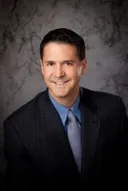Differences In Palate - How Physicians Can Use Their Talents to Diversify a Healthcare System

Brent Hofacker/123RF.com
Think back to the last time you ate BBQ, if you like that sort of thing. Chances are you recall how your mother made it and use that as the standard of comparison for all others. It is not to say that a variation is not good, but rather different - perhaps interesting, or even a new favorite altogether.
The same concept applies broadly to healthcare. It is so easy to find current practices rutted in tradition for no other sentiment than always doing something in a particular manner. The healthcare landscape is primed for innovative thinkers ready to place a new twist on delivering exceptional patient care.
Your Kitchen - Your Spices
Every practitioner brings a wealth of experience, preference, education, and creativity to the organization he or she joins. After a brief orientation, practitioners are thrown into the milieu and often proceed on the course laid out by the current administration. The flavor of the past is frequently painted over by local ideology.
I think there is a better way. Being new allows an opportunity to share vision and innovation. Tradition doesn't always equate to excellence. Given a chance, many clinicians vent frustrations about inefficiency. Why not step forward and share a novel idea, collaborate, and solve the issue? Just because an idea isn't earth shattering doesn't mean it is without value.
Here are a few examples I have witnessed or been a part of over the last decade:
-A typical scenario unfolds in hospitals across the county. Health system leaders choose a new EMR, and the staff receives a memo mandating their adoption. Options for signing up to learn the system are given on a first-come first-serve basis. Staff is angry, physicians are in an uproar, and many contemplate leaving.
Solution: Instead of training physicians on a new EMR, they partner with a physician-coach who works 1:1 "at the elbow" until staff is competent and proficient. This technique eases clinician anxiety, restores productivity to prior levels, and fosters adoption of a new EMR system. Providers feel that their time is valued and that they are not being forced to swallow a bitter pill by administration once again.
-A local clinic had not revised its policies for over seven years. Minor patients were allowed to receive care for issues not allowed under current law. The administration pushed back, stating that "this is how it is always done" in their community and refused to change the guidelines for nursing triage.
The workaround: An attorney friend was contacted, and a dinner exchanged for advice. A brief letter was written to the parent organization's regional administration. Their team of lawyers got on board and immediately redrafted the policy to bring the clinic into compliance and protect providers from potential battery charges for failure to consent parental authority to treat patients under 18 for minor conditions such as sore throats, lacerations, and sprains.
-An outlying rural Emergency Department had an ultrasound machine, but the OR staff kept it under lock and key under the premise that "ER docs don't know how to use it or will break it."
Solution: The ultrasound machine was brought to the ED on a quiet morning. Several EM and Family Practice physicians demonstrated a variety of uses for the existing older machine and educated administration on more cutting-edge applications such as retinal detachment, IV starts to aid nursing staff, central lines, pneumothoraces, etc. The administration was quite pleased and immediately allocated budgetary monies to purchase a new, more portable unit dedicated for ED use.
-Q/A at a particular hospital was sent out per the preference of a previous hospital administrator. The benchmark was that of a Level I trauma center, a completely different practice environment. The local physicians were frustrated and dismayed by the feedback received, given their paucity of resources and the staffing constraints of their small hospital.
Innovation: The smaller hospital partnered with the Level 1 center to provide education in both directions. Rural physicians presented cases for Q/A and discussion after clarifying what staff, services, and equipment were available at their facility. The Level 1 trauma center staff shared novel solutions and ways to troubleshoot difficult airways without backup, revisited and updated rapid transfer protocols, and developed an understanding of the challenges of rural medicine. In the end, a strong bond formed between several of the physicians, and patient care improved as a result.
None of these examples reinvented medicine but rather serve as examples of how thinking differently quickly provides solutions to many of healthcare's problems.
The only limit is your mind. Will you innovate, partner for collaboration, iterate, or fall in line with the status quo?
Related Posts
